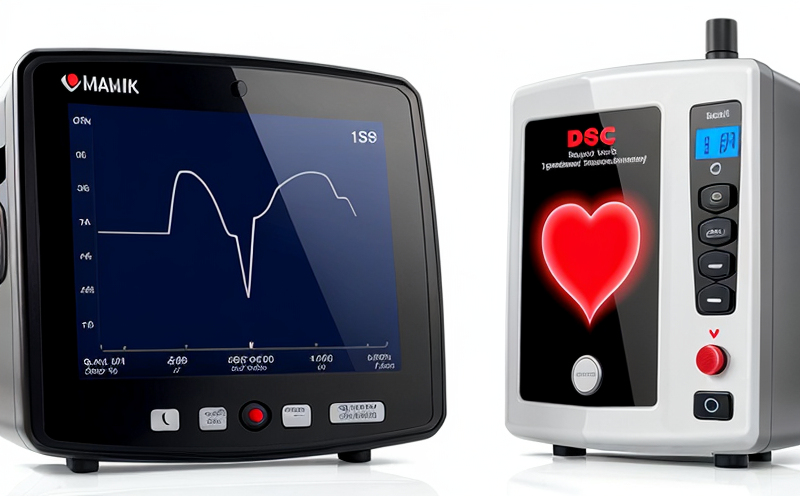ISO 25539 Catheter Shaft Torqueability Testing
The ISO 25539 standard is a critical benchmark for ensuring the quality and safety of catheter shafts, which are essential components in various cardiac and cardiovascular medical devices. This testing method evaluates how much torque (rotational force) can be applied to a catheter shaft before it fails or deforms. The procedure is vital as it helps manufacturers identify weak points in their designs and ensures that the catheter will function safely within the body.
The test setup typically involves clamping one end of the catheter shaft securely, while the other end is subjected to incremental rotational torque until failure occurs. This can be achieved using a specialized machine designed for ISO 25539 compliance testing. The specimen preparation requires ensuring that the catheter shaft is free from any defects or contaminants that could influence test results.
The acceptance criteria for this test are stringent and are defined in the standard itself. A catheter shaft passes the ISO 25539 torqueability test if it does not fail within a specified range of applied torque, which varies based on the type and design of the catheter. Failure modes can include fracture, deformation, or loss of shape, all of which indicate that the catheter may not perform reliably under typical use conditions.
The importance of this testing cannot be overstated in the context of medical devices. A failed catheter shaft during a procedure could lead to significant complications for the patient and potentially life-threatening situations for the medical staff. By adhering to ISO 25539, manufacturers can demonstrate their commitment to producing high-quality products that meet international standards.
Moreover, this testing is not merely about compliance; it's also about enhancing product design and performance. Through rigorous testing, engineers gain insights into how different materials and structural designs affect the torqueability of catheter shafts. This knowledge allows for iterative improvements in future iterations of the device, leading to safer and more effective medical devices.
The implementation of ISO 25539 also ensures consistency across manufacturing batches. By standardizing the testing process, manufacturers can ensure that every catheter shaft produced meets the same high standards. This consistency is crucial for maintaining patient safety and regulatory compliance.
- Customer Impact: Ensures reliable performance under stress conditions, reducing risk of device failure during critical procedures.
Satisfaction: Increased trust in the product's durability and reliability, leading to higher customer satisfaction.
In conclusion, ISO 25539 catheter shaft torqueability testing is a fundamental aspect of ensuring the quality and safety of cardiac and cardiovascular medical devices. By adhering to this standard, manufacturers can produce reliable products that meet international standards and improve patient outcomes.
Why It Matters
The integrity of catheter shafts is paramount in the field of cardiology and cardiovascular surgery. These components must withstand significant mechanical stress during procedures while ensuring minimal discomfort to the patient. The ISO 25539 standard provides a robust framework for evaluating the torqueability of catheter shafts, which directly impacts their performance and safety.
From a regulatory standpoint, compliance with this standard is essential for product certification and market access in many countries. It demonstrates that manufacturers have taken all necessary steps to ensure their products meet stringent quality controls. This is particularly important given the high stakes involved when these devices are used in critical medical procedures.
For R&D engineers, ISO 25539 provides a clear roadmap for designing and refining catheter shafts. By understanding the criteria outlined in this standard, they can make informed decisions about material selection, geometry design, and manufacturing processes that enhance torqueability without compromising other aspects of device performance.
Quality managers and compliance officers benefit from ISO 25539 as it offers a standardized method for testing catheter shafts. This ensures uniformity in quality across production batches, reducing the risk of batch-to-batch variability. It also simplifies audit processes by providing clear guidelines that can be easily referenced during inspections.
In summary, ISO 25539 is not just about meeting regulatory requirements; it's a tool for improving product design and ensuring consistent quality. Its implementation fosters trust between manufacturers and healthcare providers, ultimately benefiting patients by delivering reliable medical devices.
International Acceptance and Recognition
The ISO 25539 catheter shaft torqueability testing standard is widely accepted across the globe due to its rigorous approach and emphasis on patient safety. Many countries have adopted this standard as a mandatory requirement for medical device certification, especially in the cardiac and cardiovascular device sectors.
Regulatory bodies such as the FDA (USA), MHRA (UK), and TGA (Australia) recognize ISO 25539 as part of their quality assurance frameworks. This recognition underscores its importance in ensuring that products meet stringent safety and performance criteria before being brought to market.
The international acceptance of this standard is further enhanced by its alignment with other relevant standards like EN ISO 14712, which covers the mechanical properties of medical devices. This harmonization across different standards ensures a consistent approach to quality assurance in the industry.
Manufacturers that comply with ISO 25539 not only meet regulatory requirements but also gain credibility among healthcare providers and patients. The use of this standard indicates a commitment to excellence in product design and manufacturing, which can be a significant differentiator in competitive markets.





